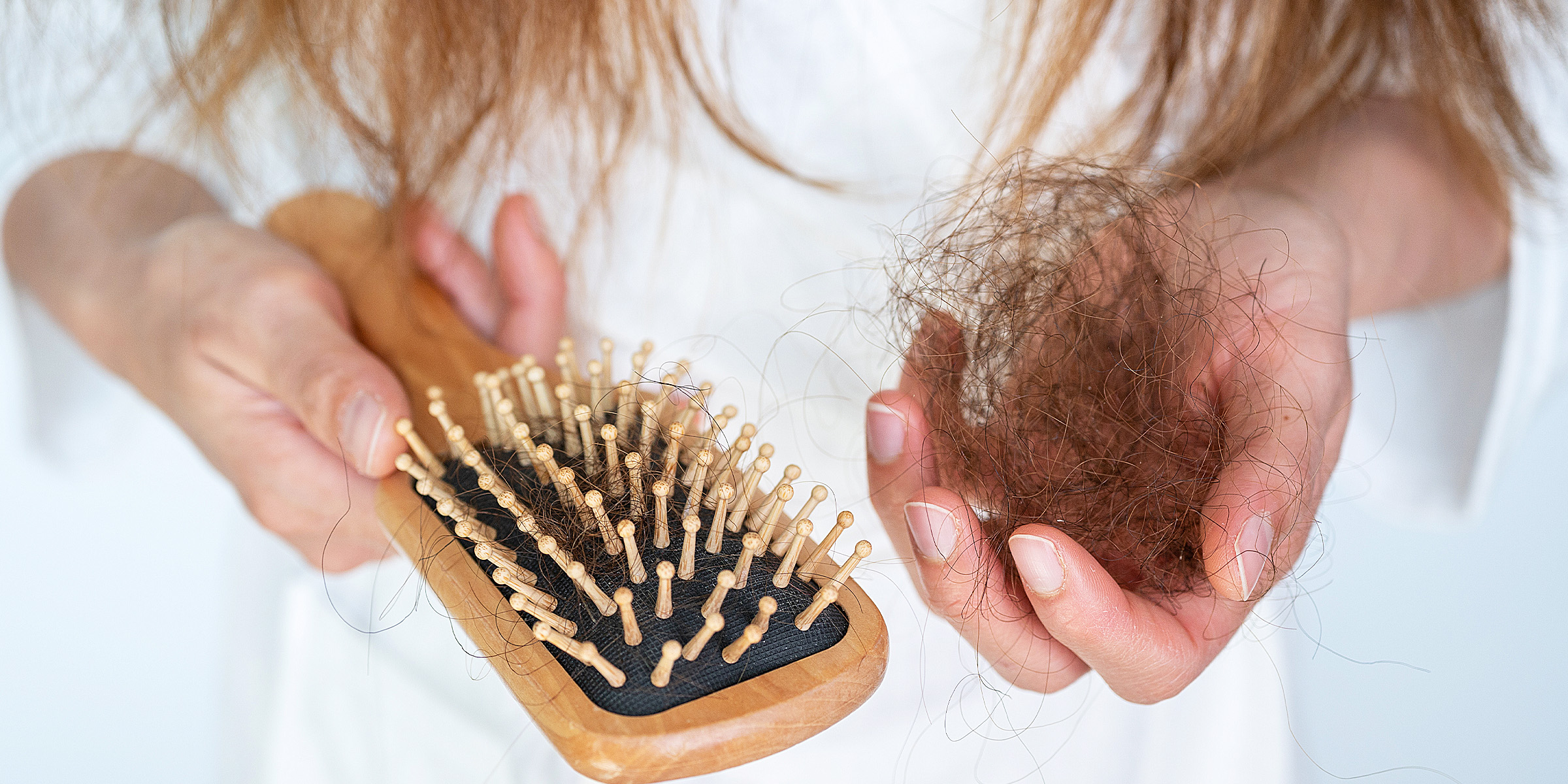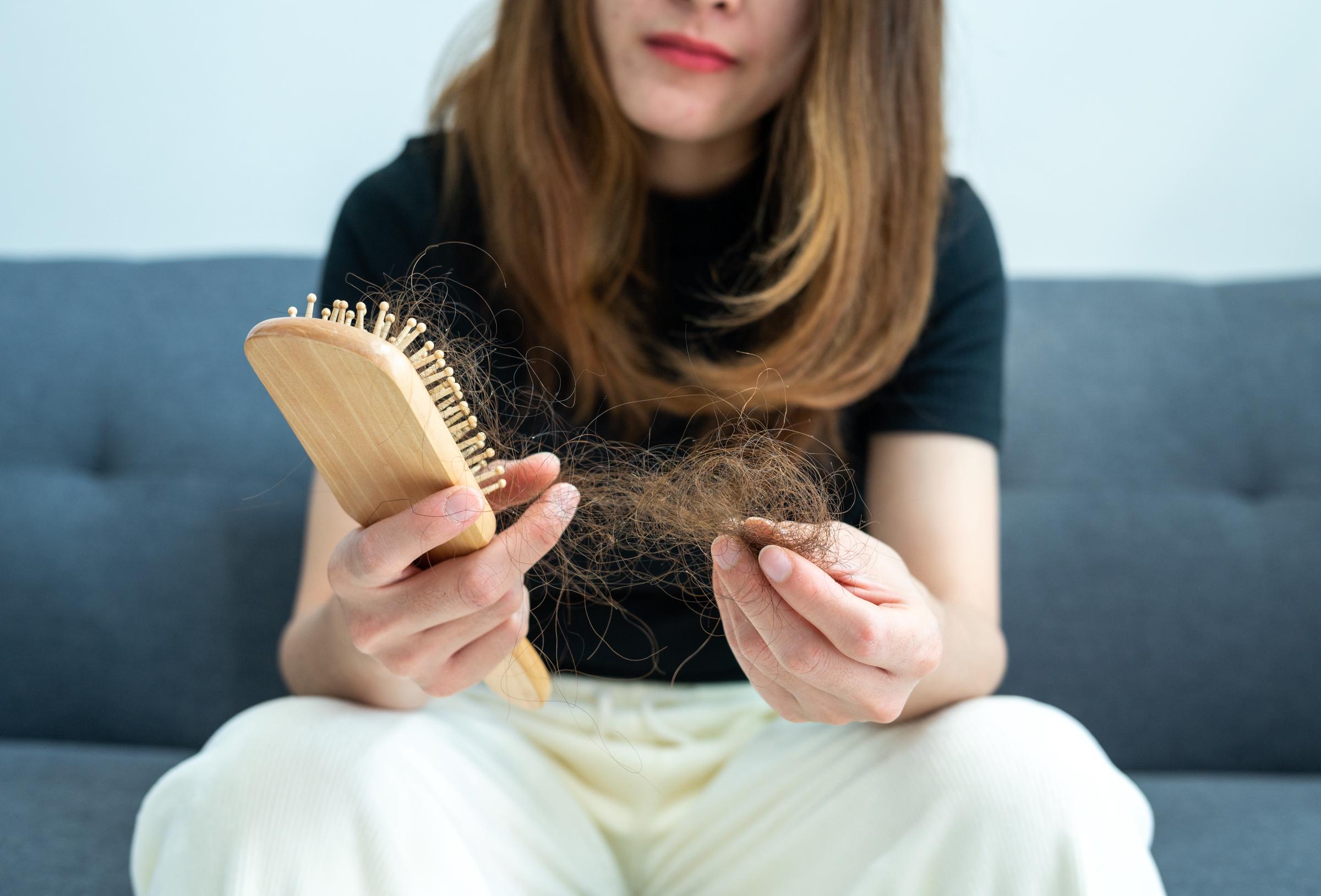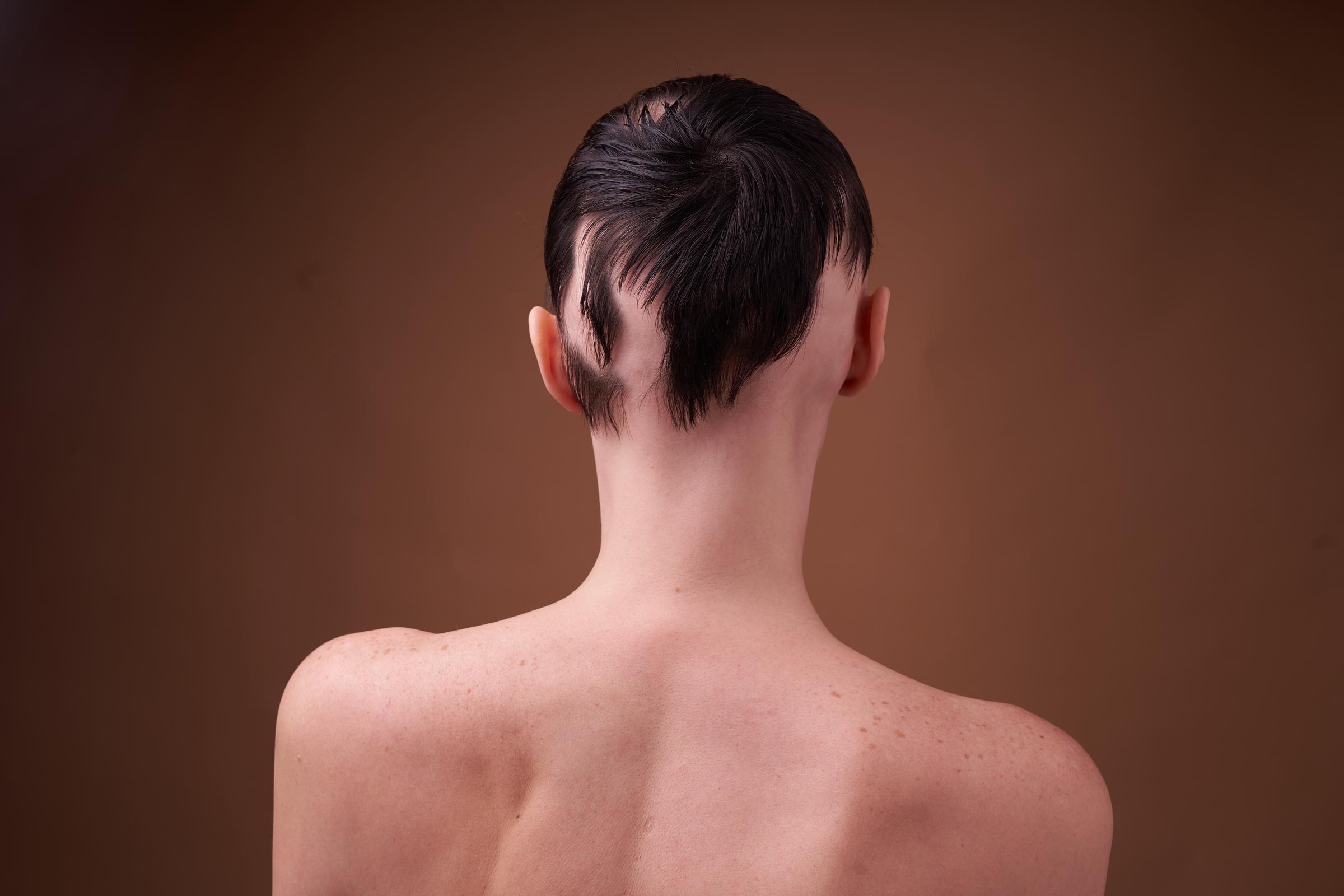
Causes of Women’s Hair Loss — What You Should Know and How to Deal With It
Seeing that abnormally thick clump of hair on your brush can be a dreadful experience, as hair is an integral part of many women's identities. If this is happening to you and you're wondering why, here's what you should know.
Your hair is constantly going through different life cycles, meaning new strands are always replacing those ready to fall out. That's why it's normal to see some strands on your brush after a styling or grooming session or in the shower drain.
However, if you start to notice larger amounts of hair falling out and visible signs of thinning — despite maintaining a generally healthy hair routine that has worked for you before — it might be time to consult a medical professional. If you're unsure whether this applies to you, here's how to tell.

A woman holding a brush and a clump of hair | Source: Getty Images
What Are the Signs of Hair Loss in Women?
Hair loss can show up in different ways depending on the cause. You might notice sudden shedding or a gradual thinning over time. Here are some common signs and symptoms to look out for:
- Overall thinning: You may see gradual thinning on the top of your head — this is the most common type of hair loss. Your part might start to look wider, or your scalp may become more visible.
- Bald spots: You might notice small circular or patchy bald areas on your scalp. Sometimes the skin in these spots feels itchy or sore right before the hair falls out.
- Handfuls of hair: Sudden hair loss can happen after emotional stress or physical trauma. You may find clumps of hair coming out while washing or brushing, which can lead to noticeable thinning over time.
- Full loss: Certain medical treatments, such as chemotherapy, can cause rapid and significant hair loss.
Keeping a hair diary can help you track any changes or symptoms you experience. This can be a useful tool to share with your doctor and start a conversation about what might be causing your hair loss and how to manage it.

A close-up of a woman's gradually thinning hair | Source: Getty Images
What Causes Hair Loss in Women?
Hair loss in women can occur for several reasons, ranging from genetics and stress to medical conditions and hormonal changes. Here are the common causes:
- Androgenetic alopecia: Also known as female-pattern baldness, this is the most common type of hair loss in women. It causes gradual thinning on the top of the head or a widening part and tends to occur slowly over time. It's more common after menopause and often linked to genetics.
- Telogen effluvium: This temporary condition happens when stress, illness, or hormonal changes push hair into the shedding phase. You may notice clumps of hair coming out while washing or brushing. It often resolves within six to eight months once the trigger passes.
- Chronic health conditions: Autoimmune diseases and other disorders like thyroid disease, lupus, celiac disease, psoriasis, or anemia can disrupt normal hair growth and lead to hair loss.
- Menopause and hormone imbalances: A drop in estrogen and progesterone during menopause can thin hair or slow growth. Symptoms like stress, night sweats, and weight gain may worsen shedding. Some women also notice changes after stopping birth control pills.

A woman suffering from alopecia | Source: Getty Images
What Are Some Treatments of Hair Loss?
Hair loss treatments vary depending on the cause, but there are several options available that can help slow shedding and promote regrowth. These are a few options for your to consider:
- Topical minoxidil: Available over the counter in 2% and 5% strengths, this FDA-approved treatment for men and women promotes hair regrowth when applied to the scalp daily.
- Low-light lasers: Laser combs and caps use low-energy light to stimulate hair follicles. Only a few models are FDA-approved, but they may help with mild to moderate thinning.
- Prescription oral medications: Finasteride and spironolactone are sometimes prescribed off-label for women, though they're not FDA-approved specifically for female pattern hair loss.
- Platelet-rich plasma (PRP): This procedure injects plasma from your own blood into the scalp to encourage hair growth. It's FDA-approved for healing tendons but not yet for hair regrowth.
- Microneedling: Often combined with topical minoxidil, this treatment uses fine needles to create tiny punctures in the scalp, helping improve absorption and stimulate new hair growth.
While hair loss can be frustrating, the good news is that there are many effective options to help restore confidence and support healthy growth. By identifying the underlying cause and working with a qualified specialist, you can find a treatment plan that fits your needs and goals.
The information in this article is not intended or implied to be a substitute for professional medical advice, diagnosis or treatment. All content, including text, and images contained on WomanlyLive.com, or available through WomanlyLive.com is for general information purposes only. WomanlyLive.com does not take responsibility for any action taken as a result of reading this article. Before undertaking any course of treatment please consult with your healthcare provider.
